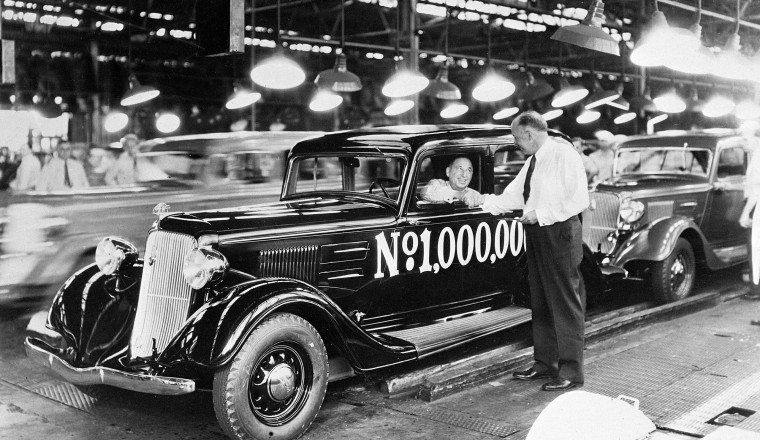
In the run-up to (and celebration of) the Chrysler Corporation’s centennial, the firm’s history has been well-documented. Walter Chrysler, famously, used his management of the Maxwell Motor Co. to develop a car under his brand name and launch his eponymous automobile company.
However, it’s not widely known that before he founded the Chrysler Corporation, Walter P. Chrysler had already been a major player in the automotive industry for over a decade. He played an important role in the growth of General Motors during its early years, and he helmed several other car companies. Even less well known is the fact that the man, whose mechanical aptitude undoubtedly had a role in establishing the Chrysler Corporation’s reputation for engineering excellence, didn’t even begin his career in the automobile industry. His roots come from a different sector of the transportation industry, where he was so successful that automobile executives recruited him to make cars.
Walter Percy Chrysler was born on April 2, 1875, to Henry and Anna Breymann Chrysler in Wamego, Kansas. His father, known as “Hank,” was a veteran of the American Civil War and said to be a legendary locomotive engineer on the Kansas Pacific Railroad, the predecessor of Union Pacific.
Kansas was on the frontier at that time. As a train driver, Hank was busy with train robbers, raids by Native tribes, and even bison on his tracks. Eventually, the family moved on from the rustic town of Wamego. Ny the time Walter was four years old, the Chryslers had moved to the more established city of Ellis, Kansas, where he would spend the remainder of his youth. He was close to his mother, who was described as “tough,” and to his father, described as “warmhearted.”
It was during that youth, that Chrysler established permanent interests in music, sports, the outdoors, and humor. He started on drums, took piano lessons (where he would meet his lifemate Delia Forker, the daughter of the affluent owner of a local abattoir and butcher shop), and played the tuba throughout his life. Walter liked to hunt and fish and played baseball well. A practical joker, in later life he would leave whoopee cushions and fake bugs around his mansion to amuse guests. He made friends easily and enjoyed many lifelong friendships.
Chrysler’s entrepreneurial and business skills manifested early. He sold flatware door-to-door and would sell excess milk from the family’s cow to neighbors, keeping track of their accounts in a small pocket notebook—a practice that he would continue throughout his business career.
Though Walter Chrysler was quite intelligent, he struggled in school. His interest lay in machinery, particularly the locomotives in which his father would occasionally let him ride. He left school at 15, and within a year he was working more than 16 hours a day as a delivery boy. The gig paid just $10 a month. He hoped to become an apprentice at the local railroad, though Hank Chrysler had his own hopes: that Walter would be the first of the family to receive a college education.
Nevertheless, Walter got into the railroad industry at the ground floor in 1892, earning 10 cents an hour sweeping floors in the Union Pacific shops. His diligent work ethic and ability to get along with other employees persuaded his supervisors to convince Hank to let his son enter the apprenticeship program. Walter was thrilled, even though taking the new job meant a 45 percent reduction in pay. The ability to delay financial gratification in lieu of gaining skills and experience would serve Chrysler well throughout his life.
As an apprentice, Walter Chrysler attached himself to veteran mechanics. With his “an unquenchably curious mind,” he absorbed everything that he could from them. Apprentices in those days made their own tools; although the shop standard for depth gauge accuracy was 1/16″, Chrysler made his own gauges to be accurate to 1/32″. The tools he built remained in his possession for the rest of his life, later being displayed on the observation deck of the Chrysler Building in NYC and at the Walter P. Chrysler Museum in a toolbox that he likely made as well.
Walter Chrysler was one of those rare autodidacts. He took multiple courses from the International Correspondence School, something he would do for much of his life, and would read Scientific American magazine from cover to cover, becoming a frequent contributor to the publication’s letters to the editor section. It was from that magazine that he learned of the Westinghouse Company’s invention of air brakes for railroads, becoming an expert as his employer rolled out the system.
By then, Walter and Delia had gotten engaged, and his salary had increased to $1.50/day. But that was still not enough of an income to support a family. Delia, through it all, remained loyal. While her friends were marrying local boys, she encouraged Walter to achieve his ambitions, which meant taking jobs outside of Ellis, where she would wait for him. At the age of 22, he took a position as a journeyman mechanic with the Atchison, Topeka and Santa Fe Railroad in Wellington, Kansas.
A quick study, the young journeyman soon was working on and solving issues that stymied even the supervisors, but he missed Delia and returned to Ellis, taking a position as a night mechanic for Union Pacific. He told her that his dream was to be in charge of a railroad shop as a master mechanic. There soon followed a series of jobs for the peripatetic Chrysler. He went to work for the Colorado and Southern Railroad in Colorado, but quit after only two weeks because he found Denver to be “wild and reckless.” Jobs in Laramie, Cheyenne, and Rawlins, Wyoming followed. At each stop, Walter learned new skills and how to apply them to the different locomotives each railroad operated. It’s recorded that he went to Chicago for the 1893 Columbian Exposition, presumably to keep up with the latest technologies which were a major focus of the world’s fairs of the era.
Chrysler’s next job was in Salt Lake City, a place that he found pleasant. After five years of engagement, Walter and Delia finally married in 1901, setting up their home in Utah. Their life savings were $60, an amount their later wealth would dwarf.
The following year, Chrysler was promoted to roundhouse foreman, in charge of almost 100 men, most of them far more experienced and older than he. In 1903, the couple and their newborn daughter moved to Trinidad, Colorado, where Walter took a position as general foreman of the Colorado & Southern’s shops there, in charge of a thousand men. Known to be a demanding supervisor, he was so respected by his workers for laboring side-by-side with them, demonstrating his superior technical skills, that they called the 29-year-old by the sobriquet, “the old man.” He would later repay that respect. Several of his co-workers in Trinidad went on to work at the Chrysler Corporation or became Chrysler, Dodge, or Plymouth dealers.
While in Trinidad, Chrysler was taken under the wing of George Cotter, a general superintendent of the railroad, who invited him to meals with other rail executives in Cotter’s private railcar. The two men became friendly, and his exposure to Cotter’s lifestyle made Chrysler realize that his ambitions could go well beyond being a shop foreman and master mechanic.
Three months after their first meeting, Cotter was so impressed by Chrysler that he put him in charge of rebuilding and running the Childress, Texas shops of the Fort Worth & Denver City railroad, owned by the same parent company as the Colorado & Southern. The small town in the Texas panhandle was much more rustic and rowdy than Trinidad, but Delia joined him, insisting that he take the job and go where he needed to advance his career.
In late 1905, when Chrylser was offered the position of master mechanic for the Chicago Great Western Railroad’s main shops at Oelwein, Iowa, Cotter urged him to take the job for a competitor. It was a dream opportunity; the Oelwein ships were so large that they could service 16 locomotives at a time. Barely a year later, at 32, Walter Chrysler was promoted to superintendent of motive power, putting him in charge of all of the railroad’s locomotives.
In 1908, a trip to the Chicago auto show would change Chrysler’s life. The show convinced him that it was the automobile, not the train, that was the future of transportation. At the show, he became entranced with the luxury Locomobile and was determined to own one. “I did not simply want a car to ride in. I wanted the machine so I could learn all about it. Why not? I was a machinist and these self-propelled vehicles were by all odds the most astonishing machines that had ever been offered to me,” he wrote in his memoirs.
In the early 20th century, most saw the automobile as a fad—a plaything for the wealthy—but Chrysler saw it as a means by which the average person could improve their lives. Though he was earning just $2400 a year and had only $600 in savings, Chrysler was driven to own the almost $5000 Locomobile. He begged a banker friend to loan him the money, saying that, “The railroads have made this a richer country, haven’t they? . . . Just ask yourself what this country will be like when every individual has his private railroad and is able to travel anywhere.” Chrysler’s reputation was such that a superior at Chicago Great Western guaranteed the loan.
A short while later, a white Locomobile with red leather upholstery arrived by train in Iowa. Another train, this one made of horses, brought it to the Chryslers’ home, where Walter had set up a garage. Though Delia begged him for a ride, Walter first disassembled and rebuilt the Locomobile forty times over the course of three months until he felt comfortable that he knew how it worked. Then he took Mrs. Chrysler on her first automobile ride.
Ownership of the railroad changed hands to a group with which Walter Chrysler did not get along. He quit in late 1909. His reputation was such, though, that one of the leading manufacturers of locomotives, the American Locomotive Company (ALCO) hired him at a substantial increase in salary to $3300/year to run its Allegheny works near Pittsburgh, which had been struggling.
Although he had never run a manufacturing facility before, Chrysler proved to be a natural at it. The plant was soon profitable, and by 1911, with bonuses, Walter Chrysler was earning $8000 a year. That is about a quarter of a million dollars in today’s currency.
Meanwhile, up in Flint, Michigan, entrepreneur William “Billy” Durant, after a spree of acquisitions starting with Buick, Oldsmobile, and Cadillac, had lost control of General Motors to bankers on the East Coast. One of those bankers was James Storrow, who was also on the board of directors of ALCO. At the time, Buick was being managed by Charles Nash, who, like Walter Chrysler, had come from humble beginnings, and Storrow suggested to Nash that he hire Chrysler to manage Buick’s manufacturing.
By then, Chrysler was aware of his worth in corporate America. As he and Nash negotiated a salary, ALCO found out and offered him $12,000 a year—a 100 percent increase over his base salary. When he told Nash of that offer, Nash told him that not only could he not match the offer, he could only afford to pay him $6000 a year, which matched his then base salary but was a 25 percent cut in total income. Despite the hit to the family income, Delia encouraged Walter to take the job, and in early 1912, the family moved to Flint.
Billy Durant was a wheeler-dealer, not a cost-conscious manager. Chrysler discovered that Buick didn’t even know how much it cost to build their cars. He started jotting down notes in his always present pocket notebooks. Costs were soon contained and profits booked. He also discovered that the plant was experiencing “shrinkage”; Buick had no testing facility, so completed cars were road-tested on the streets of Flint. Chrysler found out that as many as four cars a day were not returning to the factory. He implemented a tracking system that saved the equivalent of his entire salary for a year, and he did that during the first week he was in Flint.
Chrysler then applied efficiency to Buick’s designs, making assembly faster and more profitable. By 1916, Chrysler had grown Buick from 20,000 units a year to 124,000, making it twice as productive per worker as its major competitors. He improved working conditions, increasing lighting in the plants, making adequate fresh water available for workers, and hiring full-time nurses to treat on-the-job injuries. Because of the explosive growth of Flint, housing was inadequate, with some Buick workers living in shanties. Chrysler worked to make decent, affordable housing for Buick employees.
Walter Chrysler was a man of action. He said, “All I am is just a man who wants things done and done quickly. Give me a quick decision, even if a mistake happens. That’s all right. The same mistake won’t happen a second time.”
After three years of making Buick profitable on his reduced salary, Chrysler demanded a raise to $25,000 (more than $600,000 in today’s dollars) from Nash, threatening to quit. Nash was incredulous but Storrow convinced him to pay Chrysler. After he got the raise, Walter told Nash that he wanted that to be doubled to $50,000 the following year.
In 1915, after founding Chevrolet and with the backing of the DuPont chemical family, Durant reasserted control over GM. Neither Charles Nash nor Walter Chrysler liked Durant’s disorganized style of management. Chrysler liked Durant personally but not professionally. Of Durant, Chrysler later said, “I cannot hope to find words to express the charm of the man. He has the most winning personality of anyone I’ve ever known. He could coax a bird right down out of a tree, I think.”
Nash, then president of GM, left to take over the Thomas Jeffery company, maker of the Rambler automobile, rebranding that company Nash. Nash wanted Chrysler to join him but Durant got wind of their plans and offered Chrysler $500,000 a year to stay on and become president of Buick. Chrysler accepted the offer on the condition that he would have complete control of Buick with no interference from Durant. Chrysler took control of Buick in June 1916, for a salary equivalent to almost $15 million today. He was also appointed to the GM board and granted shares of stock in the company.
Durant and Chrysler had frequent conflicts. When Durant announced plans to build a new factory to manufacture car frames at a higher cost than Chrysler had negotiated from a vendor, Walter had had enough. In November 1919, Chrysler left GM, selling his stock back to Durant for $10 million (~$186 million in 2025 dollars).
At 44, Walter Chrysler was one of the wealthiest men in America and could have easily retired to a life of leisure and luxury. Instead, he accepted the appeal of John Willys’ backers to take control of the Willys-Overland company, one of America’s top five car makers, despite its inefficient manufacturing. Chrysler demanded complete control and a guaranteed salary of one million dollars a year for two years.
The Chrysler family moved to New York so Walter could run Willys, but he soon found out that the promise of independence and full control was not fulfilled. There was continued infighting between John Willys and the financiers.
Chrysler started exploring the possibility of starting his own car company with his own brand. He engaged three former Studebaker engineers, Fred Zeder, Carl Breer, and Owen Skelton, known in the industry as “The Three Musketeers” because they always worked as a team, with complementary skills, to start designing an all-new Chrysler automobile.
A recession in 1920 and 1921 cratered automobile sales, and many car companies failed. Willys itself went into receivership. The backers of Maxwell sought out Chrysler’s guidance. He agreed to consult for what to him was the token salary of $100,000 a year, but he had much bigger plans. In 1921, Maxwell was reorganized with Walter Chrysler as the chairman of the board of directors, giving him complete control of the company as well as considerable stock, which was then at a low value. In three years, he quintupled production and sales, with profits reaching $6 million. The value of his stock soared. The “Three Musketeers” followed Chrysler to Maxwell, where they worked on the firm’s first six-cylinder car and continued to develop the Chrysler automobile on the side.
In 1924, the Maxwell Motor Company launched the all-new Chrysler Six, the first car to be branded as a Chrysler. It was a state-of-the-art automobile with a number of firsts for American cars: a high compression engine, four-wheel hydraulic brakes, oil and air filters, an emergency/parking brake, and dashboard-mounted temperature and fuel gauges.
The Chrysler Six was an immediate success. So much so that the following year, Maxwell was renamed the Chrysler Corporation. And the rest, as they say, is history.
If you would like to learn more about Walter P. Chrysler’s life story, his autobiography, Life of an American Workman, is available at the Internet Archive.








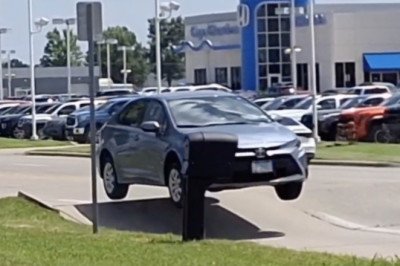
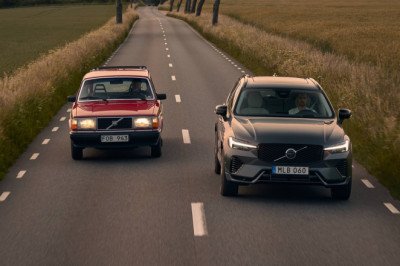
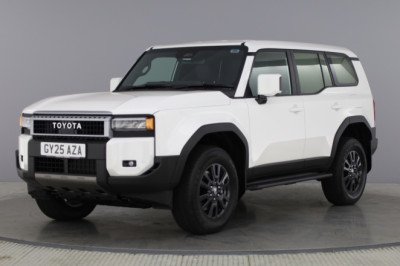


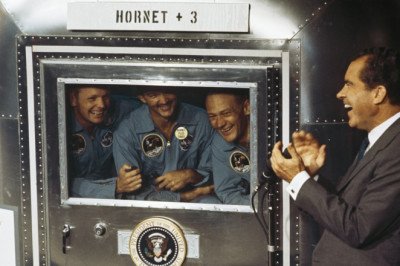
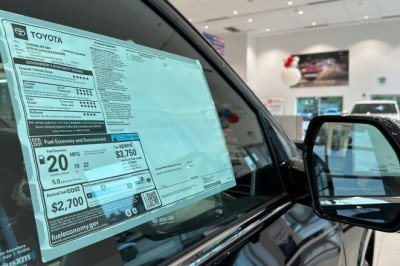
Facebook Conversations